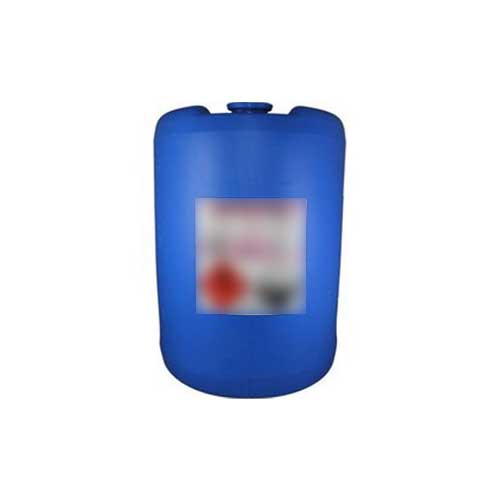POLY ALUMINIUM CHLORIDE (PAC)-AlnCl(3n-m)(OH)m
ABOUT:
Poly Aluminium Chloride (PAC) is typically manufactured by two methods: the high basicity process and the direct process.
- High basicity process: Aluminum hydroxide and hydrochloric acid are employed as raw ingredients in this procedure. To create a solution, aluminium hydroxide is first dissolved in hydrochloric acid. The degree of polymerization is then increased by heating and stirring the solution. A high basicity PAC that has a higher level of polymerization and a higher charge density than PAC made using the direct approach is the end result.
- Direct process: Calcium carbonate, hydrochloric acid, and aluminium hydroxide are used as raw ingredients in this procedure. To create a solution, aluminium hydroxide is first dissolved in hydrochloric acid. The solution is then given a dose of calcium carbonate, which raises pH and encourages PAC production. A PAC with a lower degree of polymerization and a lower charge density than PAC made using the high basicity technique is the end result.
PHYSICAL PROPERTIES:
Appearance: light yellow to brown powder or liquid
Odor: does not have a distinct odor
Density: ranges from 1.2 to 1.4 g/cm³ for the liquid form and 2.3 to 2.5 g/cm³ for the solid form
pH: pH range of 3.5 to 5.0
Boiling point: PAC does not have a boiling point as it decomposes before boiling.
Melting point: PAC decomposes before melting.
Viscosity: PAC solutions have a low viscosity, which means they are easily mixed with water.
CHEMICAL PROPERTIES:
- The molecular weight of PAC can vary depending on the degree of polymerization and the fraction of OH groups substituted by chloride ions. Typically, the molecular weight ranges from 1,000 to 100,000 g/mol.
- PAC is an ionic compound that contains positively charged aluminum ions (Al3+) and negatively charged chloride ions (Cl-).
- PAC is highly soluble in water and forms a clear solution. It is less soluble in organic solvents.
- PAC is stable under normal conditions of use and storage. However, it may decompose in the presence of strong acids or bases.
- PAC is a coagulant that reacts with impurities in water to form larger particles that can be easily removed by filtration or sedimentation.
APPLICATIONS:
WATER TREATMENT:
- When PAC is introduced to water as a coagulant, the negatively charged particles in the water are neutralised and bigger flocs are formed, which are simple to remove using sedimentation or filtration.
- The pH of water can be changed using PAC, which can improve the coagulation and flocculation processes.
- In water treatment procedures, PAC can be used as a disinfectant to eliminate or render inactive microorganisms like bacteria, viruses, and algae.
- Water coloured by dissolved organic debris can be successfully removed using PAC.
PULP AND PAPER INDUSTRY:
- In order to increase the paper’s strength and water resistance, PAC is employed as a sizing agent in the paper-making process.
- To clean recycled paper pulp of ink and other pollutants, PAC can be used as a deinking agent. By doing so, the quality of recycled paper is enhanced and less virgin pulp is required.
TEXTILE INDUSTRY:
- To increase the textile’s ability to retain colour, PAC is employed as a dye-fixing agent in the textile manufacturing process.
- PAC is used as a flocculant in the treatment of textile effluent to remove suspended particles and pollutants.
- To increase the strength and stiffness of the textile, PAC is used as a sizing agent in the textile manufacturing process.
OIL AND GAS INDUSTRY:
- In the treatment of oil and gas wastewater, PAC is employed as a flocculant and coagulant to remove suspended particles, oil, and grease.
- In order to purge contaminants and sediments from the fracturing fluid, PAC is utilised as a flocculant and coagulant. This contributes to fracturing’s increased effectiveness and decreased downtime.
- During desalinating seawater, PAC can be employed as a coagulant to filter out pollutants and sediments.
SAFETY MEASURES:
- Wear appropriate personal protective equipment, including gloves, eye protection, and respiratory protection when handling PAC. Avoid skin contact and inhalation of fumes.
- Store PAC in a cool, dry, well-ventilated area away from sources of heat, flames, and incompatible materials. Follow proper handling and storage procedures to avoid spills and leaks.
- Always dilute PAC with water before use to reduce its corrosiveness and potential for splashing. Use only the amount of PAC necessary for the intended purpose and avoid overuse.
- In case of spills or leaks, contain the material and clean up using appropriate procedures and protective equipment. Do not release PAC into the environment.
- Dispose of PAC and any contaminated materials in accordance with local regulations and guidelines. Do not dispose of PAC in drains or other waterways.
- Ensure that employees and workers are properly trained in the safe handling, storage, and use of PAC. Provide appropriate safety equipment and procedures.




Reviews
There are no reviews yet.